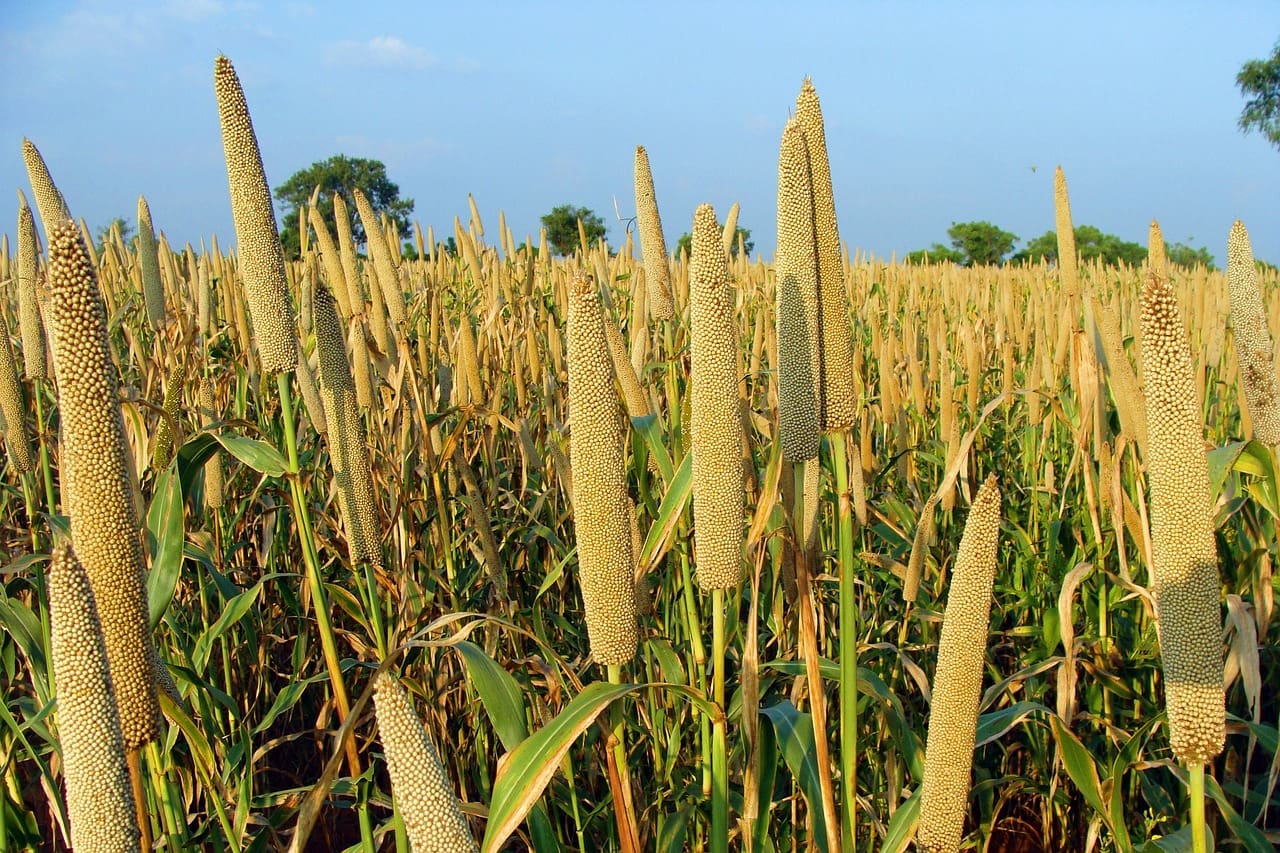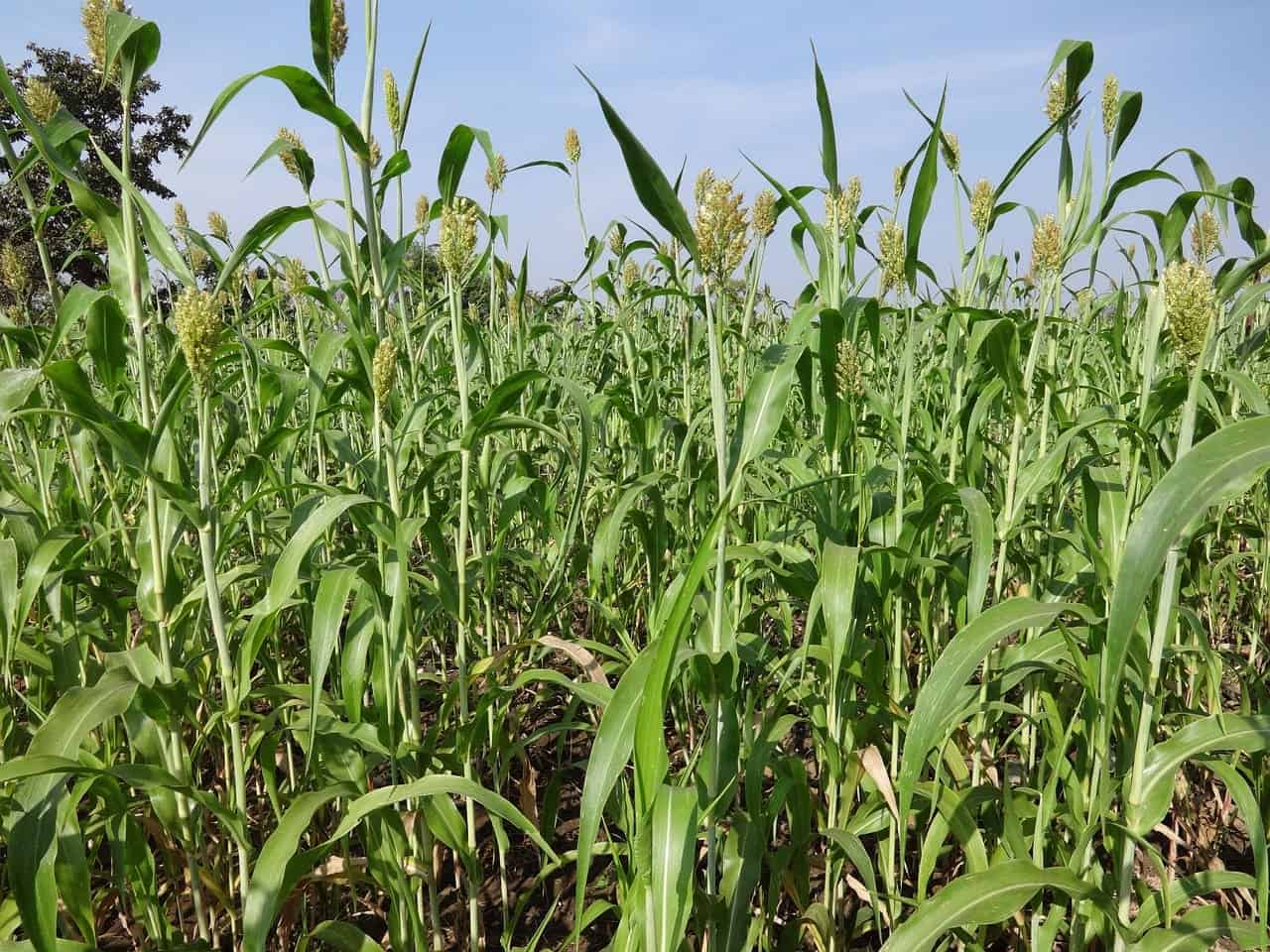Everyone wants to live a healthy and fit life, but improper eating habits and a sedentary lifestyle make it impossible. It is critical to keep a close check on what we consume. Bajra and jowar are the most commonly consumed flours by humans.
Both Bajra and Jowar are millets, and both are incredibly healthy and have a variety of health benefits. However, they differ in benefits, nutritional content, and various other characteristics.
Key Takeaways
- Bajra (pearl millet) and jowar (sorghum) are different cereal grains used in various traditional dishes and consumed worldwide.
- Bajra is higher in protein and fat content than jowar, while jowar is richer in dietary fiber.
- Bajra thrives in arid and semi-arid regions, whereas jowar is more adaptable and can grow in arid and humid climates.
Bajra vs Jowar
Bajra is one of the most widely grown varieties of millet. It has antioxidants which help prevent cancer and heart disease. Jowar is a cereal grain native to Africa. It is ideal for people with diabetes because of its delayed digestion which slows the absorption process and causes an increase in insulin levels.

Bajra lowers the risk of heart disease and enhances the heart’s condition. It also has certain mystical properties, such as lessening the chance of deadly diseases like cancer and using antioxidants to fight cancer.
It can also help with weight management. It’s especially beneficial for pregnant women since it’s high in iron and folic acid, good for both the mother and the baby.
The health benefits of jowar are numerous. Consumers will find it to be a tremendous source of energy. This grain aids in the body’s insulin production, highly recommended for diabetes patients. It is gluten-free.
Those who suffer from gastrointestinal problems should consume jowar flour rather than wheat flour. It contains nutrients like magnesium, calcium, and copper, which help to strengthen the bones and tissues.
Comparison Table
| Parameters Of Comparison | Bajra | Jowar |
|---|---|---|
| Leading Producers | It is produced in India and Africa. | It is produced in almost every part of the world, like India, Nigeria, Mexico, and the United States. |
| Binomial Name | Sorghum Bicolor | Cenchrus Americanus |
| Benefits | The presence of antioxidants in them helps to prevent cancer and heart disease. | The delayed digestion of the jowar slows the absorption process and causes an increase in insulin levels, making it ideal for people with diabetes. |
| Usage | Human consumption | Human consumption, animal feed, production of liquor, and manufacturing bio-based ethanol. |
| Nutrients | Protein, Dietary fibers, fat, carbohydrates | Copper, Magnesium, and calcium |
What is Bajra?
In English, bajra is known as pearl millet, also a synonym for Pennisetum glaucum. It also goes by other names in different parts of the country, such as ‘Sajje’ in Kannada, ‘Kambu’ in Tamil, ‘Bajeer’ in Kumaoni, and many others.
This is a well-known millet variety, farmed in Africa and parts of the Indian subcontinent.
It does not require much water to grow, and it may be readily grown in drought-prone areas. It does not need a high or natural PH of the soil to grow, as it can thrive in soil with a low PH.
The bajra crop has a great tolerance to harsh environmental conditions and may survive in them.
They are primarily produced in locations where other crops such as maize, cereals, and wheat are not suitable. They don’t require fertile soil to thrive. India is the largest producer of bajra in the world.
Because of the dry atmosphere and land of Rajsthan, bajra is the most widely consumed and grown crop. At the same time, Africa is the second greatest producer.
There has been a lot of research and development on pearl millet productivity. These studies have aided farmers in producing higher-quality crops in greater quantities.
Researchers have attempted to address the issue of micronutrient malnutrition in Asia and Africa, where it is primarily grown. There are around 1000 genotypes of pearl millet, 31 of which are wild.

What is Jowar?
Jowar is the common name for Sorghum. Great millet, broomcorn, guinea corn, durra, imphee, and milo are other names. They are a grass species that are farmed for their grains.
Jowar is used for a variety of purposes, including human consumption, animal feed, and ethanol manufacturing.
Jowar originated in Africa, but it is currently grown in a variety of climates, including tropical and subtropical. After rice, wheat, and maize, it is regarded as the most important cereal.
The crop grows in bunches and reaches a height of around 4 meters. The diameter of the jowar grain is approximately 2 to 4 mm.
Sweet sorghum is another type of sorghum that is primarily farmed to produce syrup and ethanol. They are taller than the other grain-producing crops.
Jowar is a crop that does not require moist circumstances and can be grown in various temperatures, elevations, and hazardous soils. These crops have the ability to rebound after being subjected to drought.
It has some unique characteristics that make it an excellent drought-resistant crop. The crop’s leafes and roots are both huge in proportion.
When there is a drought-like situation in the atmosphere, the crop’s leaves are rolled to prevent water loss through transpiration. These crops do not die if the weather remains dry; instead, they fall into dormancy to serve.
The waxy cuticle is a protective covering for the jowar crops’ leaves. This crop uses the C4 carbon fixation mechanism, which consumes only a third of the water C3 plants use.

Main Differences Between Bajra and Jowar
- At this moment, jowar is almost universally cultivated, whereas bajra is grown in select locations of Africa and India under precise meteorological conditions.
- The bajra is primarily farmed for human utilization, but the jowar is used for a variety of purposes, including human consumption, animal feed, liquor manufacture, and the manufacturing of bio-based ethanol for industrial use.
- Jowar is gluteen-free, has a high starch resistance, and contains a variety of phenolic compounds not seen in Bajra.
- Bajra is a crop that grows between 0.5 and 4 metres tall and comes in a range of colours, including white, pale yellow, brown, grey, stale blue, and purple. The jowar crop, on the other hand, can reach a height of 4 metres.
- The grains of bajra and jowar are different sizes. Jowar grains are small and range in diameter from 2 to 4 metres, whereas bajra grains are oval and range in length from 3 to 4 metres.
